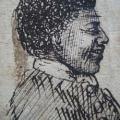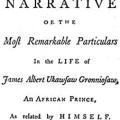31. Justin Smith on Amo and Race in Early Modern Philosophy
Posted on
Justin E.H. Smith joins us to discuss Anton Wilhelm Amo against the background of ideas about race in early modern philosophy, including Leibniz.
Themes:
Further Reading
• J.E.H. Smith, “Christian Platonism and the Metaphysics of Body in Leibniz,” British Journal for the History of Philosophy 12 (2004), 43-59.
• J.E.H. Smith, Divine Machines: Leibniz and the Sciences of Life (Princeton: 2011).
• J.E.H. Smith, “‘A Series of Generations': Leibniz on Race,” Annals of Science 70 (2013), 319-35.
• O. Nachtomy and J.E.H. Smith (eds), The Life Sciences in Early Modern Philosophy (Oxford: 2013).
• J.E.H. Smith, “Natives, Nature, and Natural Slavery,” Graduate Faculty Philosophy Journal 35 (2014), 81-100.
• J.E.H. Smith, Nature, Human Nature, and Human Difference (Princeton: 2015).
• J.E.H. Smith, “Stahl and Leibniz on the Role of the Soul in the Body,” in A. Pelletier (ed.), Leibniz and the Aspects of Reality (Stuttgart: 2015), 111-22.
• Justin E.H. Smith, The Philosopher: A History in Six Types (Princeton: 2016).
• Justin E. H. Smith (ed.), Embodiment (Oxford: 2017).
• S. Menn and J.E.H. Smith (trans), Anton Wilhelm Amo's Philosophical Dissertations on Mind and Body (Oxford: 2020).







Comments
Add new comment